17 Smart Lead Generation Ideas to Boost Your Sales
Table of contents
Lead generation is the lifeblood of any business. The options for attracting and converting potential customers are almost endless in today’s digital age. Businesses can leverage numerous effective strategies to generate leads and grow their customer base, from content marketing and social media to webinars and chatbots.
In this article, I’ll explore some of the most innovative and proven lead-generation ideas to help you reach your target audience, build brand awareness, and drive sales.
Whether you’re just starting or looking to take your lead generation to the next level, read on to discover the most effective tactics for boosting your bottom line.
17 B2B Lead Generation Ideas
- Use social listening
- Use lead magnets
- Create SEO optimize content
- Send newsletters regularly
- Offer a free trial
- Create an online course
- Present case studies
- Post regularly on social media
- Host webinars
- Participate in trade shows
- Create referral program
- Develop Interactive Lead Magnets
- Create a Content Series
- Offer Limited-Time Promotions
- Create a Community Platform
- Get into Paid Ads
- Optimize your Landing Pages
01 Use social listening
Social listening refers to monitoring and analyzing online conversations and mentions of your brand, competitors, and industry across social media and other online platforms.
Can social listening help you find leads? Absolutely. With 76% of marketers using social media to support and boost their lead generation efforts, the power of social listening becomes evident.
Brand24 is a social listening tool that helps find leads.
Here’s how social listening tools can support sales teams lead generation process:
- Monitor keywords and hashtags related to your industry, products, and services to keep track of relevant conversations and mentions.
- Use the data collected by the tool to identify potential leads and opportunities. Look for mentions of your products and services and conversations related to your industry or niche.
- Engage with potential leads by responding to mentions and comments, answering questions, and providing valuable information.
- By engaging with potential leads on social media, you can build relationships and establish yourself as a knowledgeable and helpful resource.
- Use the tool’s analytics and reporting features to track your progress and measure the success of your marketing efforts.
- After engaging with potential leads on social media, follow up with them to continue building relationships and nurturing leads.
By using tools like Brand24, marketing, and sales teams can identify and engage with potential leads on social media, build relationships, and generate leads for their business.
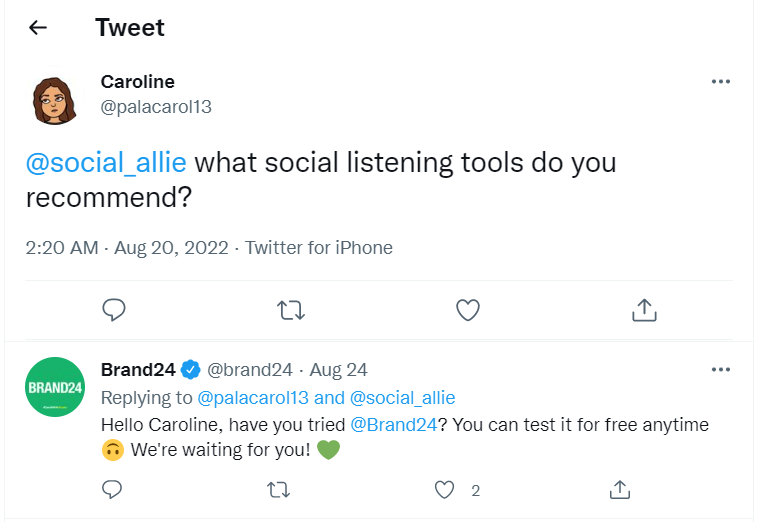
Read more: Check best growth hacking tools.
02 Use lead magnets
Lead magnets are a cornerstone of B2B lead generation, with 53% of marketers dedicating over half of their budget to creating them.
- They provide crucial information. Ebooks, whitepapers, and webinars can establish a company as an industry authority.
- They capture potential customer details. This information is vital for follow-up and lead nurturing.
- They help qualify leads. Customized to various stages of the sales funnel, they assist in identifying the most promising prospects.
Lead magnets are more than just tools for capturing email addresses. They build trust and guide potential customers through the buyer’s journey. High-value content not only captures leads but also qualifies and advances them in the sales funnel.
What lead magnets work best?
The effectiveness of a lead magnet varies with your audience and goals. However, some consistently successful types include:
- Ebooks and whitepapers offering comprehensive insights,
- Practical tools like checklists and templates,
- Free trials or product demos,
- Exclusive content or access to a members-only area,
- Educational webinars or online courses,
- Interactive elements like surveys and quizzes that provide personalized feedback.
What lead magnets are the most effective?
It depends on the target audience, industry, and business goals, but some of the most popular and effective lead magnets include:
- E-books and white papers that provide in-depth information on a specific topic,
- Checklists, templates, or step-by-step guides that provide practical and actionable information,
- Free trials, demos, or samples of products or services,
- Access to exclusive content or members-only resources,
- Webinars, online courses, or video tutorials that provide educational and entertaining content,
- Surveys, quizzes, or assessments that provide personalized recommendations or insights.
03 Create SEO optimize content
SEO-optimized content is a cornerstone of lead generation. It involves crafting articles or landing pages that resonate with your audience and rank well on search engines. With 59% of B2B marketers citing SEO as their most effective strategy for lead generation, the impact of well-crafted content is clear.
Effective SEO-optimized content follows these steps:
- Start with thorough keyword research. Pinpoint terms that your audience frequently searches for.
- Develop content that addresses your audience’s needs. It should be informative and engaging.
- Include SEO essentials like keywords and meta descriptions. These elements boost your search rankings.
- Integrate lead magnets. Offer free trials or downloadable content to gather contact details.
- Promote your content across various platforms. Use your website, social media, and email campaigns to broaden your reach.
- Monitor your content’s performance. Analytics tools can help you see what’s working and what’s not.
Well-executed SEO content can significantly enhance your lead generation efforts. It attracts the right audience and provides them with value, encouraging them to engage with your brand.
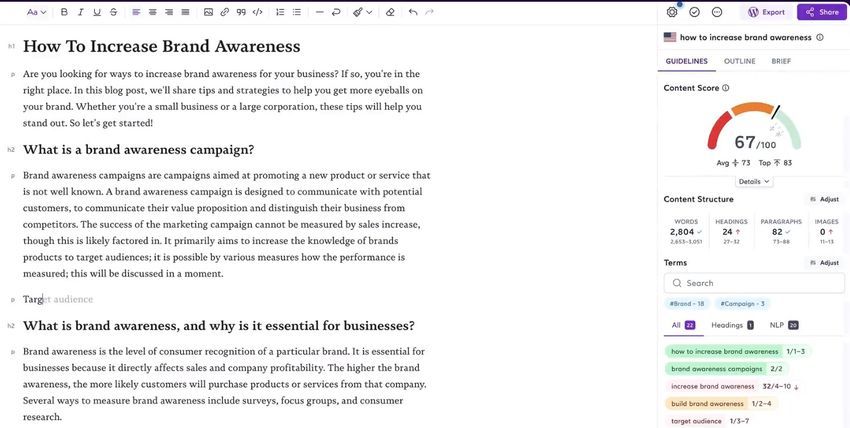
04 Send newsletters regularly
Regular newsletters keep your audience engaged and can drive lead generation. With 42% of companies considering email one of their most important lead generation tools, regular newsletters are essential.
- Start by building an email list. Use lead magnets and sign-up forms on your website and social channels.
- Create content that resonates with your audience’s needs.
- Always include a clear call to action. Invite readers to explore your products or services.
- Segment your audience for personalized newsletters.
- Maintain a consistent sending schedule, like monthly or bi-monthly.
Newsletters are more than just updates; they’re a direct line to your audience. They drive traffic, generate leads, and provide valuable metrics for your sales strategy.

05 Offer a free trial
Free trials are a powerful lead generation tactic in B2B, with 80% of SaaS companies offering them to attract high-quality leads.
Benefits of free trials include:
- Risk-Free Testing: Customers can evaluate the product’s value without financial commitment.
- Convenience: Trials can be started easily, often without leaving the office or home.
- No Purchase Pressure: Customers can explore features at their own pace, with no obligation to buy.
- Real-World Experience: Trials provide a hands-on understanding of how the product or service works.
- Increased Confidence: This firsthand experience can lead to more informed purchasing decisions and higher satisfaction.
Free trials not only encourage product adoption but also build trust. They allow customers to witness the value of a product or service firsthand, which can be a decisive factor in the purchasing process. With 66% of users likely to purchase after a free trial, this approach is a win-win for businesses and customers alike.
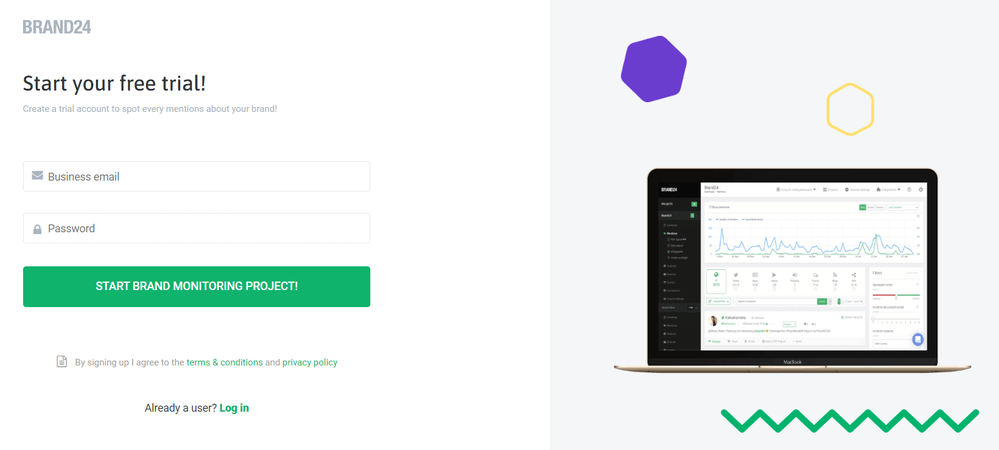
06 Create an online course
Online courses are a dynamic lead generation tool for sales managers, with the e-learning market projected to exceed $300 billion by 2025, indicating a growing appetite for digital education.
- Expert Positioning: An online course showcases a company’s deep knowledge, enhancing its reputation as an industry leader.
- Valuable Insights: Courses educate potential customers on the benefits and applications of a product or service, fostering informed decision-making.
- Brand Awareness: They extend your reach, introducing your brand to global audiences and attracting new leads.
- Engagement: Interactive courses create a two-way dialogue with prospects, strengthening customer relationships.
- Data Collection: Participant engagement provides insights into customer preferences, enabling sales teams to fine-tune their strategies.
An online course does more than inform—it engages and converts. It’s an investment in your brand’s authority and a magnet for qualified leads. With 42% of businesses reporting that e-learning has led to an increase in revenue, the potential of online courses as a lead generation strategy is clear.
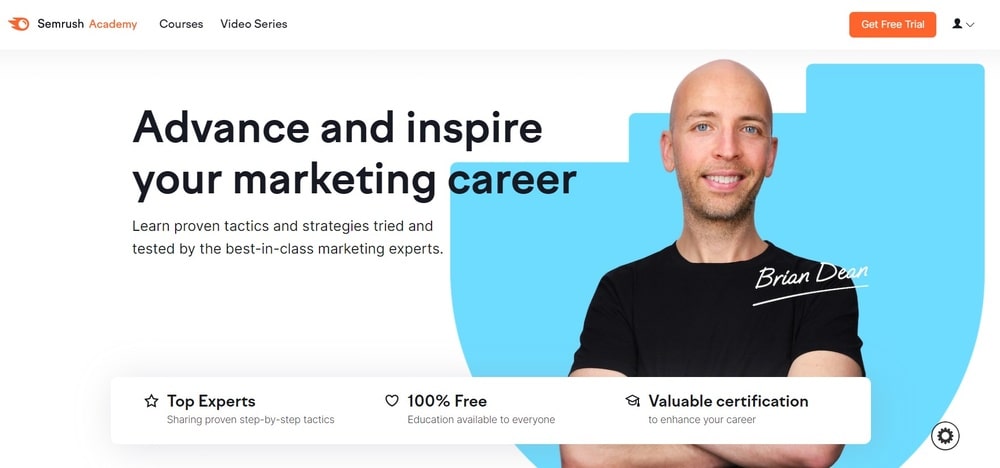
07 Present case studies
are a compelling lead generation strategy, with 73% of B2B marketers saying they positively impact their sales conversion rates.
- Trust-Building: They offer tangible proof of your product’s value, enhancing credibility.
- Value Demonstration: Through real-world results, case studies illustrate the practical benefits of your offerings.
- Solution-Oriented: They address common challenges and showcase your product as the solution.
- Competitive Edge: Unique success stories differentiate your product from others in the market.
Case studies do more than just tell – they prove. They’re a testament to your product’s success and a powerful tool for convincing potential customers. With B2B buyers consuming at least three pieces of relevant content before contacting a salesperson, case studies are invaluable in nurturing leads.
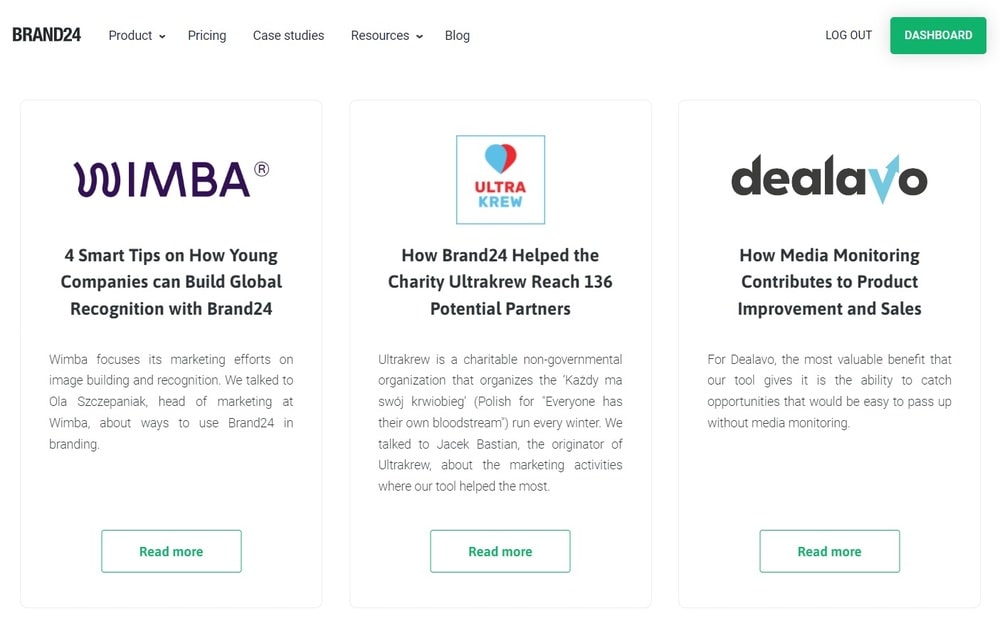
08 Post regularly on social media
A robust social media strategy is crucial for lead generation, with 54% of social browsers using social media to research products.
Sales managers can generate leads through social media platforms by implementing the following lead generation strategies:
- Engage with Content: Share valuable insights that address your audience’s challenges. This builds trust and establishes your brand as an authority.
- Leverage Influencers: Collaborate with influencers to tap into their networks and amplify your reach.
- Foster Relationships: Interact with followers to build trust and encourage lead conversion.
- Utilize Paid Ads: Targeted ads can help you reach a specific audience and enhance lead generation.
- Monitor Performance: Use analytics to track your social media success and tailor your strategy.
Consistent social media activity is more than maintaining visibility. It’s about engaging with your audience and converting interest into sales. With 77% of marketers reporting increased sales through social media, the impact of a well-managed social presence is clear.
Social media monitoring is a great method for sales managers to find new leads. By keeping an eye on social media, they can find who might be interested in buying. Try social media monitoring for free!
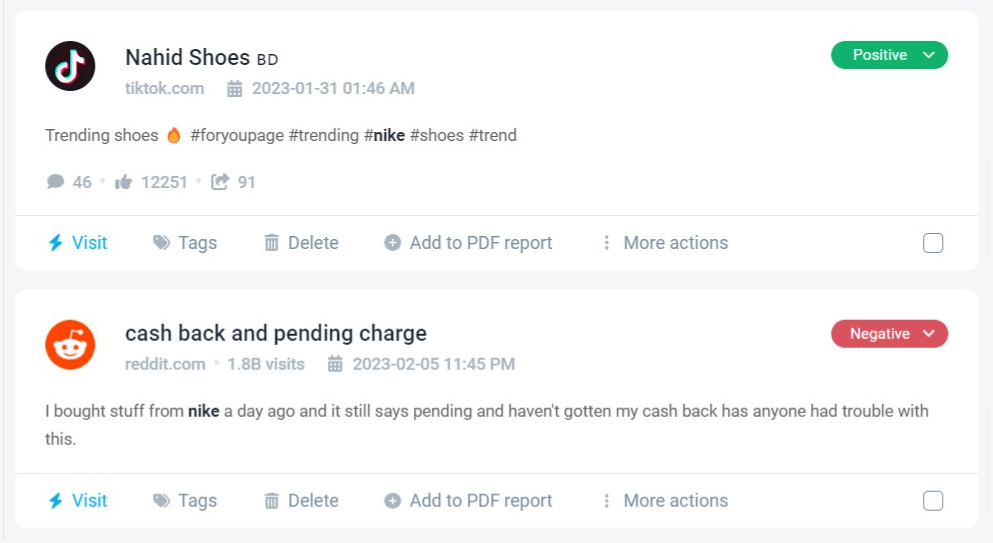
Try social media monitoring for free!
09 Host webinars
Webinars are a powerful tool for generating leads, with 73% of B2B marketers and sales leaders finding them effective for high-quality prospects.
- Educate Your Audience: Webinars serve as a platform to inform potential customers about your products or services.
- Showcase Expertise: They offer an opportunity for sales experts to demonstrate their knowledge and build authority.
- Interactive Engagement: Real-time Q&A sessions during webinars can help address participant queries and build trust.
- Gather Contact Details: The registration process for webinars provides valuable lead information for future outreach.
- Strengthen Relationships: Following up with attendees after the event can convert interest into actionable leads.
- Extend Reach: Recorded webinars continue to engage and attract leads long after the live event.
Webinars effectively draw in and engage potential customers, providing a rich source of ongoing leads. With a significant portion of marketers leveraging webinars in their content strategy, their importance in lead nurturing is clear.
10 Participate in trade shows and conferences
Trade shows and conferences are prime venues for B2B lead generation, with 81% of attendees having buying authority.
- Network Effectively: These events are ideal for connecting with potential customers and industry peers.
- Direct Lead Capture: A booth or stand at a trade show is perfect for gathering leads through demos and material distribution.
- Establish Authority: Speaking engagements at these events position your team as industry experts.
- Showcase Products: Live demonstrations can attract attendees’ attention and spark interest in your offerings.
Attending these events is a strategic move for sales teams. They provide a focused environment to engage with potential buyers and establish meaningful connections.
11 Create a referral program
are a powerful lead generation strategy. They turn satisfied customers into advocates for your business.
- Motivate Your Customers: Offer rewards for referrals to encourage your clients to recommend your services.
- Simplify Referrals: Provide easy-to-use referral links or forms.
- Strengthen Relationships: Good relationships increase customer willingness to refer others.
- Track Referrals: Use referral tracking to understand your program’s effectiveness.
- Keep Communication Open: Regular updates about the program keep it top of mind for customers.
A well-managed referral program can significantly amplify your lead generation efforts. It leverages the trust your customers have in your business to bring in new leads.
Try social media monitoring for free! Generate better leads!
12 Develop Interactive Lead Magnets
Interactive lead magnets are a dynamic way to engage potential customers and gather leads. They offer a hands-on experience that can be both informative and entertaining.
- Quizzes and Assessments: Design quizzes that provide personalized feedback, prompting users to submit their contact details for more insights.
- Calculators: Provide calculators for estimates or ROI, which require an email address to deliver a detailed report.
- Interactive Ebooks: Craft ebooks with embedded interactive elements like quizzes or actionable checklists that users can utilize in exchange for their contact information.
- Virtual Tours: Offer virtual tours for products or spaces, capturing user details at peak interest moments.
- Gamification Elements: Integrate game-like features into your content to make the lead capture process more engaging.
Content marketing, including interactive elements, generates three times as many leads as traditional outbound marketing and costs 62% less. This approach not only captures leads but does so in a cost-effective manner, maximizing the return on investment for your marketing initiatives. Interactive lead magnets are not just tools for engagement; they’re strategic assets in your lead generation arsenal.
13 Create a Content Series
Creating a content series is a strategic approach to lead generation, offering a structured way to engage potential customers with a sequence of related content pieces. Here’s how it can enhance your lead generation efforts:
- Expert Positioning: A content series can establish your brand as a thought leader in your industry.
- Sustained Engagement: With a series, you can keep your audience engaged over a longer period. This repeated engagement helps to build a stronger connection with potential leads.
- Lead Qualification: As potential leads interact with the series, you can track their engagement and interest levels. This data is invaluable for qualifying leads and tailoring your follow-up strategy.
- Content Sharing: A compelling series is more likely to be shared within networks, expanding your reach and increasing the potential for new leads.
- SEO Benefits: A series of content on a particular topic can significantly boost SEO, driving organic traffic and generating leads passively.
According to Demand Metric, content marketing generates three times as many leads as outbound marketing and costs 62% less. Moreover, HubSpot reports that marketers with blogs are 13 times more likely to drive positive ROIs. This underscores the effectiveness of consistent, valuable content in attracting and converting leads.
Remember, the key to a successful content series is relevance and value. Ensure each piece of content is designed to address the specific needs and interests of your target audience.
14 Offer Limited-Time Promotions
Limited-time promotions can drive a significant increase in leads and sales. Research indicates that sales can surge by up to 33% with these offers. They compel prospects to act swiftly, leveraging the psychological principle of urgency.
Effective implementation involves:
- Promoting the offer across all channels to maximize reach.
- Communicating the deadline clearly to enhance the urgency.
- Providing real value to encourage sharing and referrals.
- Keeping a close eye on the campaign for real-time optimization.
Limited-time promotions accelerate the decision-making process and create a buzz that can extend the reach of your brand and attract new leads.
15 Create a Community Platform
Creating a community platform can be a powerful way to engage with your audience and generate leads. Statistics show that content-driven communities can enhance lead generation efforts significantly. Here’s how to leverage a community platform for lead generation:
- Establish a Hub: Create a central space where your audience can interact, share insights, and discuss your products or services.
- Encourage Engagement: Foster discussions and content sharing to keep the community lively and engaging.
- Provide Exclusive Content: Offer valuable content that is exclusive to community members to incentivize joining and participating.
- Utilize Feedback: Use the community as a feedback tool to improve your offerings and customer experience.
- Promote Events and Offers: Use the platform to announce new products, services, and special offers to your most engaged customers.
A community platform not only nurtures leads and builds brand loyalty and creates advocates for your business.
16 Get into Paid Ads
Investing in paid ads is a direct approach to lead generation. With an average lead cost across industries at $198.44, paid ads can be a cost-effective strategy if targeted correctly. Here’s how to make the most of paid advertising:
- Target Precisely: Use demographic and psychographic data to target your ads to the most relevant audience.
- Test and Measure: Run A/B tests on your ads to see what messaging and design work best.
- Monitor ROI: Keep track of your spending and the quality of leads generated to ensure a positive return on investment.
- Use Retargeting: Implement retargeting ads to capture the attention of visitors who didn’t convert the first time.
Paid ads can quickly generate leads by placing your offer in front of the right people at the right time.
17 Optimize your Landing Pages
Effective landing pages are essential for capturing leads. A well-optimized landing page can boost conversions by up to 300%. To enhance your landing pages:
- Clarity is Key: Ensure the value proposition and call to action are unmistakable to visitors.
- Design for Conversion: Employ a design that eliminates distractions and leads visitors toward the conversion goal.
- Link Building Efforts: Actively seek to build backlinks to increase your landing page’s search engine authority and drive traffic.
- Iterative Testing: Adopt A/B testing for different page elements to find the most effective versions.
- Mobile Optimization: Given the prevalence of mobile browsing, make sure your landing pages are responsive and mobile-friendly.
A strategic approach to landing page optimization can significantly increase the likelihood of converting visitors into leads.
Conclusion
Diving into the world of lead generation opens up a realm of possibilities. Harnessing the power of social listening tools stands out as a game-changer for businesses navigating the digital landscape.
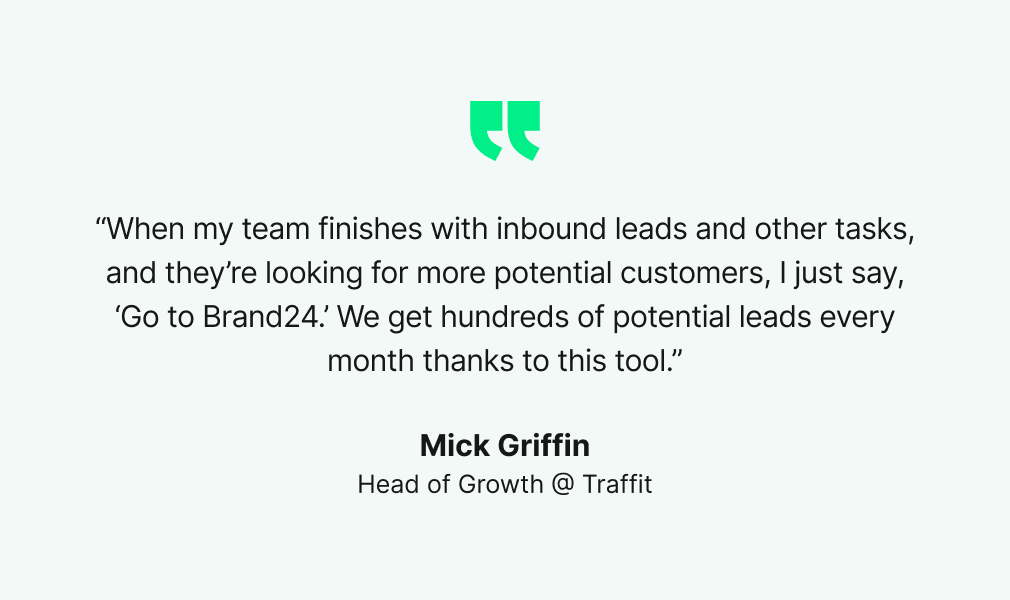
Discover our client’s success story — read the case study.
Imagine tapping into the pulse of online chatter, transforming casual conversations into a goldmine of insights. This is where the magic happens. By actively monitoring and analyzing digital discussions, companies unlock a deeper understanding of what makes their audience tick.
The art of engagement takes center stage as businesses respond to social media interactions. Each reply, each helpful insight shared, knits a stronger bond with potential leads. Trust blossoms from these digital exchanges, paving the way for relationships that go beyond a mere transaction.
The digital age waits for no one. Embrace the dynamism of social listening and watch as your lead generation efforts soar to unprecedented heights. The future of business growth is a conversation away. Are you ready to join the dialogue?
FAQ
What are the 4 L’s of a lead generation strategy?
The “4 L’s” of lead generation campaigns often refer to:
- Lead Capture: The process of collecting information from leads. This could be through forms on a website, landing pages, or social media platforms. The goal is to gather as much relevant information as possible to effectively follow up with the lead.
- Lead Magnets: These are incentives offered to potential customers in exchange for their contact information. Examples include ebooks, whitepapers, free trials, webinars, and discount codes. The aim is to provide value that entices users to become leads.
- Lead Qualification: This step involves evaluating leads to determine their likelihood to buy. It helps in prioritizing leads that are most likely to convert into sales. This can be done through lead scoring models that assess how closely a lead matches the target customer profile.
- Lead Nurturing: This is the process of developing relationships with leads at every stage of the sales funnel. It involves communicating with leads through various channels and providing them with information and resources to move them closer to a purchase decision.
What is lead gen activity?
Lead generation activity is a set of targeted actions designed to cultivate potential customers, or leads, for a business. These activities are focused on attracting individuals to a company’s offerings and encouraging them to provide their contact information.
This can include online strategies such as SEO, content marketing, and digital advertising, all aimed at boosting website traffic and engaging visitors.
The ultimate goal is to convert these website visitors into more leads by capturing their details through forms, subscriptions, or other means, thereby filling the sales pipeline with prospects who have expressed interest in the company’s products or services.
What is an example of generating leads?
An example of generating leads would be a company launching a lead generation campaign by offering a free ebook as a lead magnet on a landing page.
Interested visitors would provide their contact information to download the ebook, effectively becoming leads for the company’s sales team to follow up with.
This tactic is part of a broader lead generation strategy designed to attract potential customers and gather their details for future marketing efforts and sales outreach.

